- News
- Reviews
- Bikes
- Components
- Bar tape & grips
- Bottom brackets
- Brake & gear cables
- Brake & STI levers
- Brake pads & spares
- Brakes
- Cassettes & freewheels
- Chains
- Chainsets & chainrings
- Derailleurs - front
- Derailleurs - rear
- Forks
- Gear levers & shifters
- Groupsets
- Handlebars & extensions
- Headsets
- Hubs
- Inner tubes
- Pedals
- Quick releases & skewers
- Saddles
- Seatposts
- Stems
- Wheels
- Tyres
- Tubeless valves
- Accessories
- Accessories - misc
- Computer mounts
- Bags
- Bar ends
- Bike bags & cases
- Bottle cages
- Bottles
- Cameras
- Car racks
- Child seats
- Computers
- Glasses
- GPS units
- Helmets
- Lights - front
- Lights - rear
- Lights - sets
- Locks
- Mirrors
- Mudguards
- Racks
- Pumps & CO2 inflators
- Puncture kits
- Reflectives
- Smart watches
- Stands and racks
- Trailers
- Clothing
- Health, fitness and nutrition
- Tools and workshop
- Miscellaneous
- Buyers Guides
- Features
- Forum
- Recommends
- Podcast
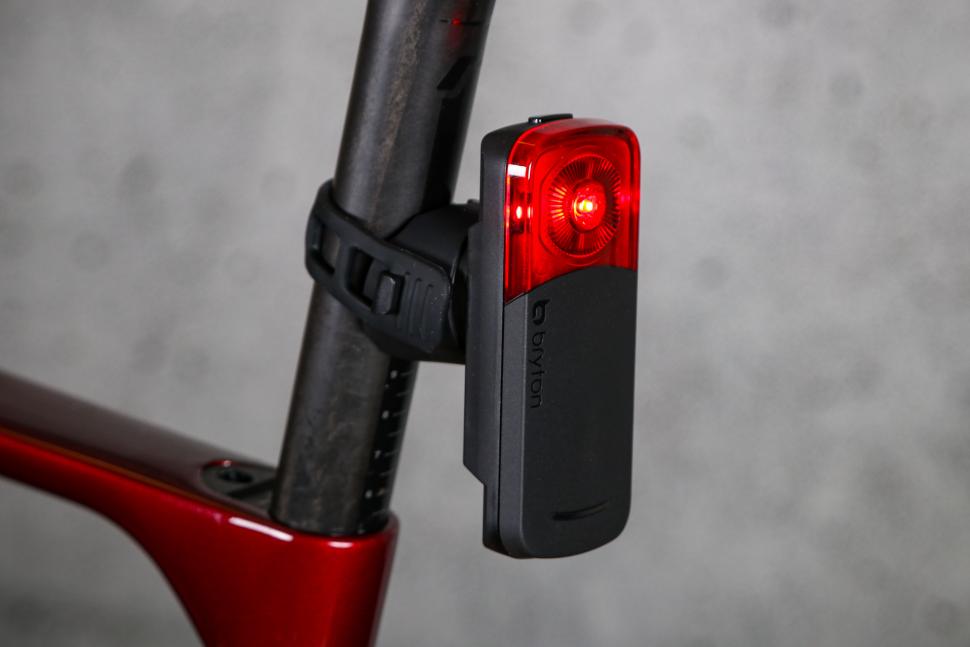 Bryton Gardia R300L Rear View Bike Radar Tail Light
Bryton Gardia R300L Rear View Bike Radar Tail Light£119.99
VERDICT:
Impressive radar/rear light system that challenges Garmin's Varia and costs less too
Effective radar coverage
Easy pairing with head units
Simple to operate
Smart light functions
Not 100% on picking up motorbikes
‘Loses’ vehicles when they're moving at your speed
Weight:
71g
Contact:
At road.cc every product is thoroughly tested for as long as it takes to get a proper insight into how well it works. Our reviewers are experienced cyclists that we trust to be objective. While we strive to ensure that opinions expressed are backed up by facts, reviews are by their nature an informed opinion, not a definitive verdict. We don't intentionally try to break anything (except locks) but we do try to look for weak points in any design. The overall score is not just an average of the other scores: it reflects both a product's function and value – with value determined by how a product compares with items of similar spec, quality, and price.
What the road.cc scores meanGood scores are more common than bad, because fortunately good products are more common than bad.
- Exceptional
- Excellent
- Very Good
- Good
- Quite good
- Average
- Not so good
- Poor
- Bad
- Appalling
The Bryton Gardia R300L is a well-priced and effective radar and rear light combination, pairing easily with my head units and detecting cars from an impressive distance away. There are some small quirks like patchy pick-up of motorbikes and losing vehicles when they're moving at your speed, but overall it's an impressive piece of kit.
Not bothered about the radar? Check out our guides to the best rear bike lights.
The Gardia R300L is effectively a rival to Garmin's Varia radar system, at a lower price. Its purpose is to warn you about vehicles approaching from the rear, but it has a couple of bonuses thrown in too, namely the easy-to-use smartphone app and smart light capabilities.
Though made by Bryton, it pairs with most modern head units, and all of the most popular brands that I use. I tried it with a Garmin Edge 830 and Hammerhead Karoo 2 and both were simple to set up and worked well once connected. As you would imagine, both units have their own ways of displaying approaching cars (Garmin has moving dots on the right, while Hammerhead has car icons on the left), but the radar system worked very well on both.
It tracked well, giving an audible warning and using on-screen visualisations to show clearly how fast approaching vehicles were moving based on how quickly they moved up the screen, and then giving an audible beep and visual 'all-clear' message once the vehicle had passed or turned off.
Like the Garmin, the Gardia also has 40-degree field of view, for detecting vehicles that might be appearing around bends off-axis to your bike, but there are a lot of roman roads where I live, which came in handy for being able to see how effective the Gardia is at detecting over long distances. Bryton says it can detect vehicles up to 150m away, but on these long, straight roads I found it tended to pick them up from about 180-200m, identifying larger vehicles from slightly further away, as you would expect.
Having said it tracked well, it was slightly less reliable with motorbikes than cars, and there were a couple of occasions where I was surprised to find myself being passed by one.
Similarly – as Mike said with the Garmin Varia RCT715 he tested recently – when a car is moving at the same speed as you it would often get 'lost' in the radar, so would no longer appear on the radar visualisation. I didn't find this a huge issue because by the time they are behind you, you're aware they are there, and the point at which they speed up to overtake they get picked up again.
Although not ideal, I think it's understandable, as they would show up as static objects to a radar in the same way a rear wheel or saddle bag would. It would be much more of an issue if it constantly showed something behind you just because you have a bike with two wheels...
I also found that, at this time of year, it could quite often produce errant readings when there was non-vehicular motion behind you. In particular, cow parsley blowing in the wind could cause it to detect a car behind me, and when I looked around there was nothing there. It's not the end of the world and didn't happen too frequently, but it is something I noticed on windy days on lanes with a lot of billowing plants on the side of the road.
Light
As a light it is also pretty effective, with five settings: high, low, day flash, night flash and group mode. (Or you can have it on radar only.) Flicking between them is just a case of a quick press on a single button on the top of the light.
A long press on this same button acts as the on/off switch, but as this is also a smart light that can be connected to your head unit, it effectively turns on and off with your head unit. So you start a ride and the light turns on too; you stop and it turns off. A nice touch.
Smart functions
The light can also detect changes in speed, which means it can act as a 'brake' light that flashes brighter when your speed suddenly slows. As with every other such brake light I've tried, it works okay but isn't perfect, because there is a natural lag between pulling on the brakes and the speed reduction filtering through to the light; it's not instantaneous, as it is on a car as soon as you press the brake pedal, so its effectiveness is debatable.
Another smart function, separate from the brake light, is the flashing light pattern changing when a car is approaching, increasing the chances of you being seen. This feature works through the radar system, which detects the distance a vehicle is away from you.
Both these functions come on automatically when the light is first turned on, but can be disabled or enabled again from the companion smartphone app.
Mounting
Mounting is through a rotational clasp similar to a Garmin mount, which attaches to the seatpost with a rubber ladder strap.
I used this on a couple of different seatpost sizes and shapes and found it held well and didn't rotate or slip, even on flat-backed aero posts.
Battery life & charging
Battery life is dependent on the light settings being used, with a claimed maximum of 17 hours in flashing mode (day and night) and 12 hours in steady mode.
These are broadly what I found throughout the review period. I tended to use the Gardia during the day, so my most common setting was Day Flash, and I only needed to charge it a couple of times over a month of riding.
Charging is via USB-C cable, attaching to a port on the side of the light that has a dust/water cover. Charging takes a couple of hours from dead to fully charged.
A warning light comes on when the unit needs charging, but you can see a more accurate percentage either on the companion app or on a paired head unit.
Value
The Gardia R300L costs £119.99, which is a good price compared with others on the market.
The best-known alternative is Garmin's Varia RTL515, as tested by Iwein last year, which costs £169.99, and to be honest, there isn't a lot to choose between them aside from price.
Dave tested the Magene L508 in January, which costs £5 more and doesn't have the same range as the Bryton.
Conclusion
Overall, I was very impressed by this radar light. It offers the same kind of functionality as the Varia at a much lower price. The tracking is effective and easy to follow, the smart light elements are a real positive, and it's one of those pieces of kit that you can basically just leave on your bike and forget about thanks to the decent battery life.
There are elements that could improved, like tall plants setting it off in a breeze, and motorbike tracking being less reliable than car tracking, but really there is little to complain about. here
Verdict
Impressive radar/rear light system that challenges Garmin's Varia and costs less too
road.cc test report
Make and model: Bryton Gardia R300L Rear View Bike Radar Tail Light
Size tested: One Size
Tell us what the light is for, and who it's aimed at. What do the manufacturers say about it? How does that compare to your own feelings about it?
Bryton says: "Ride in total safety with the Bryton GARDIA R300L rearview radar.
This rearview radar with taillight offers double protection to support you on your outings. When vehicles approach behind you, in addition to notifications on the cycle computer and GARDIA app, the Bryton GARDIA R300 will automatically change the lighting mode to warn oncoming vehicles as well. Ride safely with Bryton Gardia R300L.
The GARDIA R300L radar sensor detects vehicles approaching from behind up to 150 meters away. Connected to compatible cycle computers, GARDIA R300L provides both visual and audible alarms to warn you of oncoming vehicles. The Bryton GARDIA R300L rearview radar helps you prevent nasty surprises while riding. When vehicles approach behind you, GARDIA R300L will automatically assign a threat level based on speed, to activate a warning light suitable for alerting oncoming vehicles. When connected to a compatible Bryton cycle computer, GARDIA R300L will use the device's built-in light sensor to adjust the lighting mode based on the current light conditions.
If enough light is detected, the taillight will switch to day flash mode to conserve battery or, during night time activity, it will automatically switch to night flash mode. Using an integrated g-sensor, the Bryton GARDIA Radar Rearview Light detects braking and warns vehicles behind you with a brighter light, reducing the chances of a collision when slowing down or in the event of an emergency stop. Using the connection via ANT+ and a function-enabled cycle computer, you can connect GARDIA R300L and a compatible front light directly to the cycle computer to form a network that allows you to manage all lights from the display - including switching on/off and adjusting cycling modes.
The Bryton GARDIA R300L Rearview Radar with Taillight is designed to report the location of cyclists and help oncoming vehicles locate them. During the day, the dedicated flash mode increases visibility up to 1.6km.
Bryton GARDIA R300L provides multiple lighting modes to support you during your ride to make you visible in any conditions, including fixed high intensity, fixed low intensity, day flash, night flash and group mode. With a compatible cycle computer, you can also adjust the lighting modes directly from your screen.
Tired of calculating remaining battery hours based on a percentage? With a compatible Bryton cycle computer or the GARDIA app, the remaining battery life will be displayed directly on the screen after pairing with the radar. By directly viewing the hours of autonomy left, you can more easily manage your trip and settings before leaving.
With an impressive 17 hours of battery life in day flash mode and up to 12 hours in steady mode on a single charge, the powerful GARDIA R300L rearview radar and taillight can support you no matter how far your adventure takes you. To further extend battery life, when the level is low, the light intensity is automatically lowered. Charging via USB-C also makes charging faster and more convenient than ever!
Bryton GARDIA R300L's innovative all-in-one mounting system makes attaching your device much easier. Just fix the GARDIA R300L rearview radar in the position of your choice and you are ready to go! The included stem can fit 27.2mm, 30.9mm, 31.6mm and aero round section seatposts.
Download the Bryton GARDIA app to unlock the full potential of your GARDIA R300L rearview radar and taillight. This official app allows you to not only view the status of approaching vehicles, but will sound notifications and vibrate when vehicles are arriving. You can also control the GARDIA R300L light directly from the app to easily configure your preferences and receive the latest firmware updates."
Tell us some more about the technical aspects of the light?
Bryton lists these specs:
Width: 40.0 mm.
Height: 97.0 mm.
Depth: 20.9 mm.
Weight: 66 g.
Water resistant: IPX7.
View angle: 220°.
LED indicator: ANT+ link & Bluetooth / Power.
Fixed at high intensity: 8 hours/20 lms.
Fixed at low intensity: 12 hours/5 lms.
Flash day: 17 hours/73 lms.
Night flash: 17 hours/12 lms.
Group: 11 hours/12 lms.
Radar only (light off): 24 hours.
Rate the light for quality of construction:
8/10
Seems well made; feels like it would survive a few drops and bumps.
Rate the light for design and ease of use. How simple was the light to use?
9/10
Very easy to use, whether it's the simple mounting system or how quickly you can pair it with a multitude of head units.
Rate the light for the design and usability of the clamping system/s
8/10
The rotational bracket keeps everything in place well and the ladder strap is easy to fit.
Rate the light for waterproofing. How did it stand up to the elements?
8/10
It's rated IPX7 so should be fine. There wasn't much rain while I was reviewing this, but it survived well in the small amount there was.
Rate the light for battery life. How long did it last? How long did it take to recharge?
7/10
Good battery life.
Rate the light for performance:
8/10
Impressive light and radar performance giving clear indications of when vehicles are behind you. It also throws in some useful changes to the light settings as vehicles approach, which is a good safety feature.
Rate the light for durability:
7/10
No reason to think that it wouldn't last a long time.
Rate the light for weight:
7/10
Rate the light for value:
7/10
A good price compared with the Garmin Varia.
Tell us how the light performed overall when used for its designed purpose
Very well. It picks up vehicles well, occasionally missing the odd motorbike. The smart light elements are effective, too.
Tell us what you particularly liked about the light
How effective the radar is – it's great to be aware of a car coming up from behind well before you hear it.
Tell us what you particularly disliked about the light
The false positives from billowing plants – not a frequent occurrence but a little annoying when it happens.
How does the price compare to that of similar products in the market, including ones recently tested on road.cc?
The Garmin Varia RTL515 is the best-known alternative and has a higher price of £169.99.
The Magene L508 costs £5 more and doesn't have the same range as the Bryton.
Did you enjoy using the light? Yes
Would you consider buying the light? Yes
Would you recommend the light to a friend? Yes
Use this box to explain your overall score
This is an impressive piece of kit that works well at detecting vehicles from far away and has some nice smart light features to boot.
About the tester
Age: 35
I usually ride: CAAD13 My best bike is: Cannondale Supersix Evo
I've been riding for: 10-20 years I ride: Every day I would class myself as: Expert
I regularly do the following types of riding: commuting, club rides, sportives, general fitness riding, fixed/singlespeed,
George is the host of the road.cc podcast and has been writing for road.cc since 2014. He has reviewed everything from a saddle with a shark fin through to a set of glasses with a HUD and everything in between.
Although, ironically, spending more time writing and talking about cycling than on the bike nowadays, he still manages to do a couple of decent rides every week on his ever changing number of bikes.
Latest Comments
- TheBillder 39 min 45 sec ago
Dualling that stretch of the A7 will allow hard-pressed motorists to travel very slightly faster between the rock that is the Sherriffhall...
- BikingBud 47 min 43 sec ago
I refer to being an engineer only to emphasise my consideration of the logical approach that should be applied in the justice system, rather than...
- chrisonabike 2 hours 16 min ago
But is it compatible with elliptical chainrings?
- David9694 2 hours 17 min ago
Parking fail as car left teetering on top of stone wall Oh dear https://www.devonlive.com/news/local-news/parking-fail-car-left-teeterin...
- chrisonabike 2 hours 52 min ago
Well, you could get a rusty omafiets (would you be happy for it to weight slightly more than double, assuming you've a fairly heavy road bike)? Or...
- jaymack 3 hours 36 min ago
We must be related!
- The_Ewan 5 hours 6 min ago
But why worry if a few people do? It's just not a big deal....
- Tom_77 6 hours 10 min ago
Tempted to get him a sweary birthday cake like in The Thick Of It....
- Bigtwin 6 hours 38 min ago
Didn't happen did it? They came into my shop a couple of years back and said it was "on the way", but never heard anything more.
- Steve K 7 hours 11 min ago
Very parochially, I've still not forgiven Pearson's for abandoning their roots by leaving Sutton.













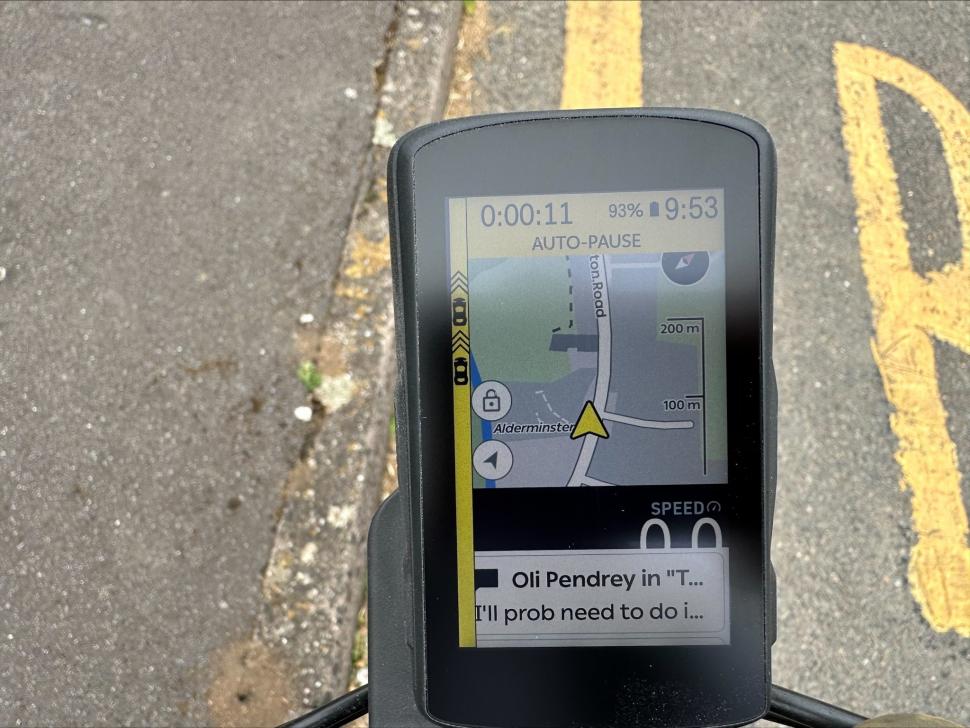


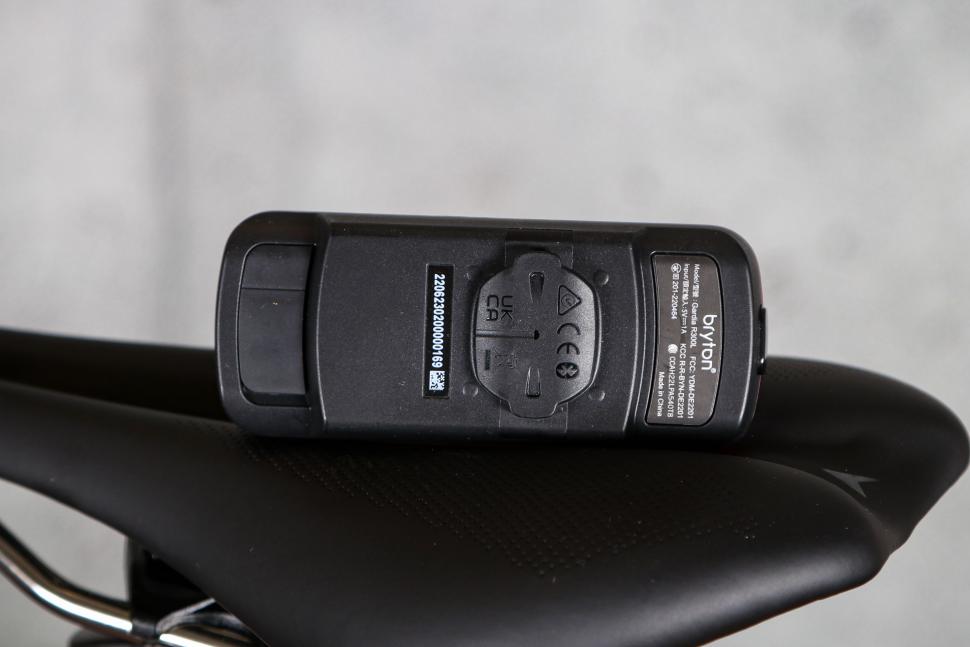
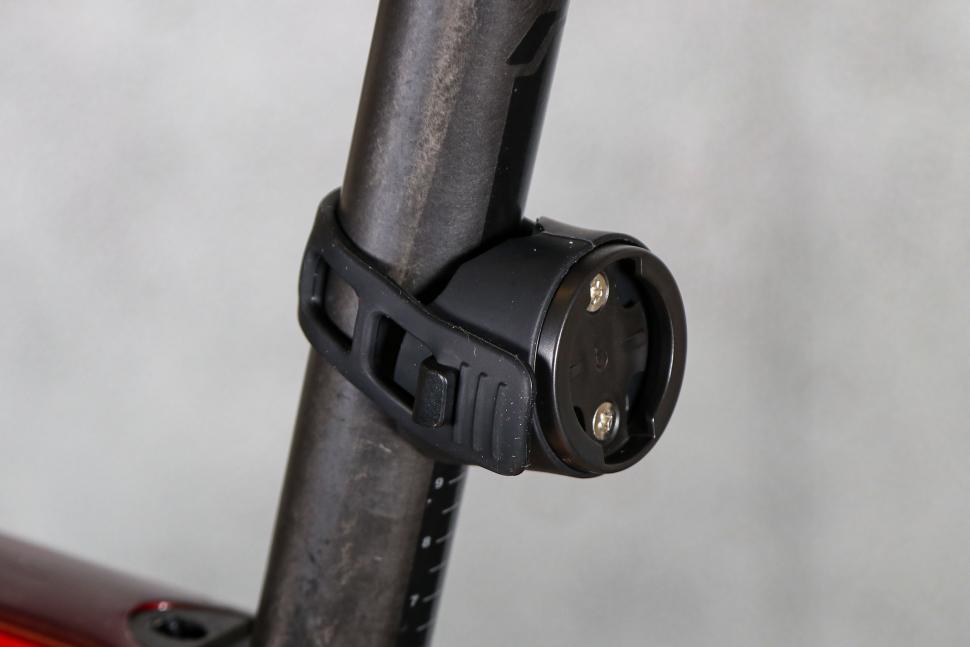

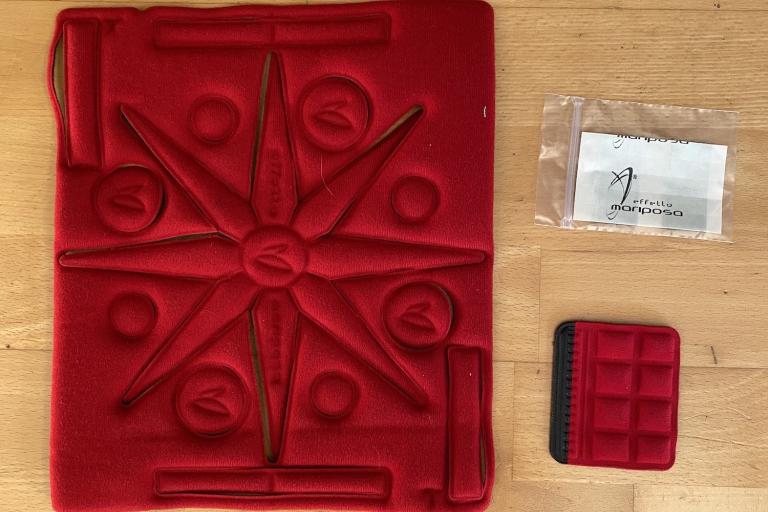
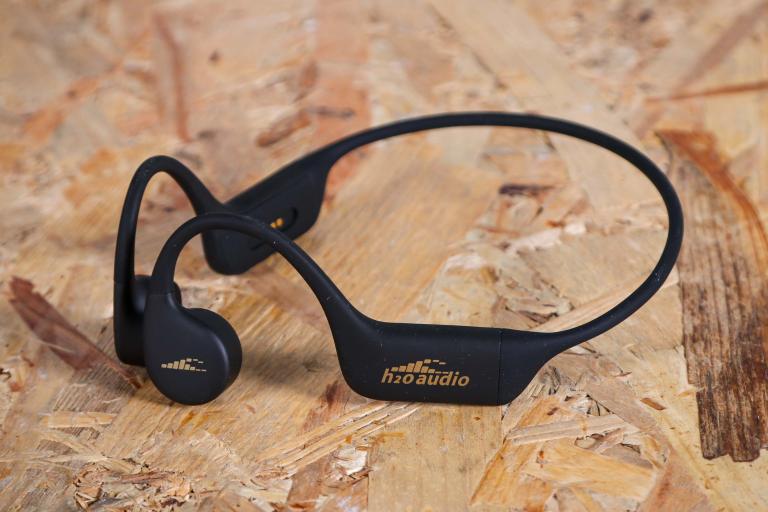
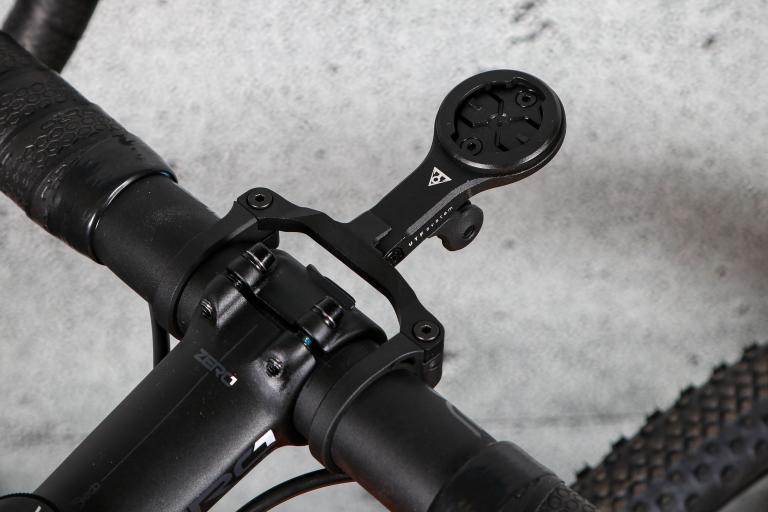

Add new comment
7 comments
What's quite ammusing about these (and maybe most rear lights) is that great lengths are gone to in order to tidy up a bike, and then accessories like this radar are strapped to the seatpost etc.
I realise this may impact on the function, and clearly Bryton and others design their brackets to be as universal as possible, but a sleaker, more minimal attachement would be welcome, and/or maybe a saddle rail fitment/bracket. Perhaps one for third parties to produce (k-edge?).
There are often third party mounts available for a lot of popular lights, the picture here shows a saddle rail mount I have for a Garmin quarter turn, as there isn't a suitable mount available anywhere for this seatpost. It also tucks the light up under the saddle and looks tidier.
Another tip I'd share is that if you can't find alternative mounts to directly attache a bike light/radar/camera/anything, is look for a GoPro style mount that fits, as they've sort of become universal now, and then look for a 3D printed adapter to GoPro, you can usually find it. The other thing i the picture is a GoPro mount that fits to a Specalized SWAT saddle mount, I can then attach anything else that uses a GoPro mount to that. In essence, use a male<->female GoPro combo as middleware for the thing you want to attach.
I'm a Garmin RTL515 user, and the negatives you have listed for the Bryton are the same with the Garmin.
The issue of losing vehicles when they're moving at your speed is part of the way all bike radars work. They alert you of vehicles coming up behind you at speed. If they're doing the same speed as you then they're effectively not moving so won't be detected.
... and the minute the vehicle accelerates to overtake it shows up again. It can make you jump if you forget theres a car behind you but its still better than having to do a shoulder check.
There is no replacement for shoulder checks, which is why they are often known as 'life saver' checks in the world of motorcycles.
Absolutely. Use a mirror or radar to get a good idea of when you think it's safe to turn etc. but shoulder check just before you actually do it.
2 different scenarios.
The shoulder check literally known as the "lifesaver" when I did my Motorbike license, is performed before commencing a manouver.
The shoulder check a radar replaces is "just in case" situational awareness type check you have to do on a bike just to make sure a car hasnt snuck up on you because you are moving so much slower than a motor vehicle. Not really applicable to a motorbike outside of a 50cc moped.